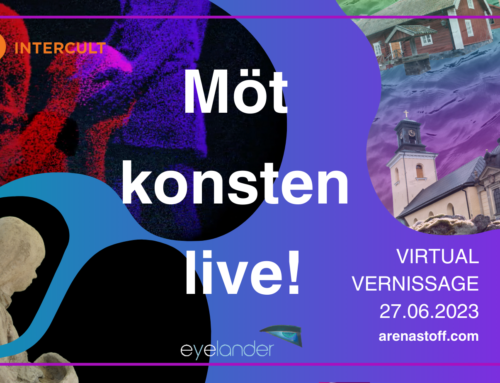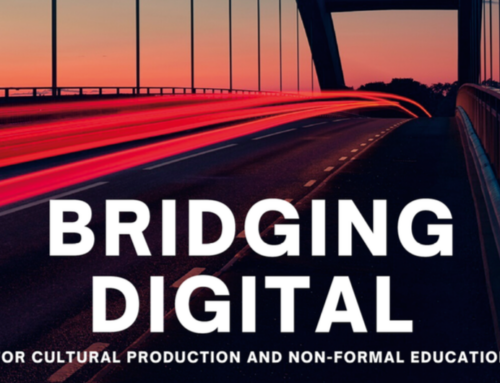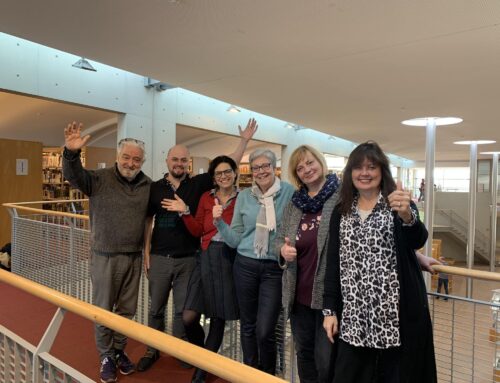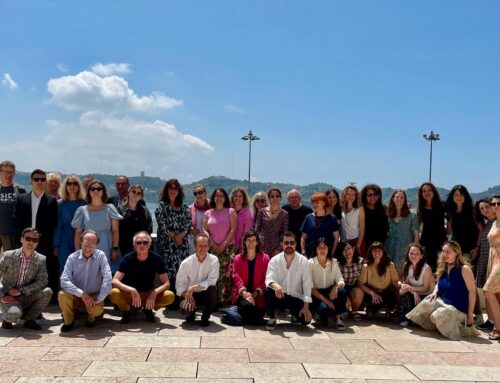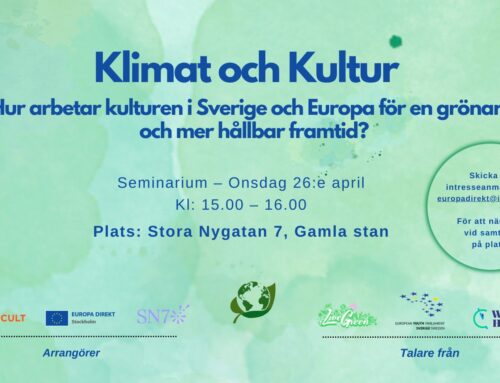From 2018, Intercult has been a lead partner in Memory of Water project co- funded by Creative Europe – building upon collaboration of 6 partner cities, based on local participation and co-creation. Memory of Water explores post-industrial cultural heritage on waterfronts in the context of urban planning and community development. Over two years, the participating partners : Intercult in Sweden, Stad Ostend in Belgium, the Municipality of Levadia in Greece, BSCC Poland, Fablevision in Scotland, and Ormston House in Ireland collaborated on twenty-three interconnected activities like city labs, international residencies, and a filmed documentary.
In 2019 thanks to Swedish Institute, we connected a 7th and 8th place, the city of Batumi in Georgia to make a bridge between Baltic Sea Region, Eastern partnership and Europe.
The main focus of these Creative Europe-funded endeavors has been strengthening co-operation between artists, cultural organizations and communities in the context of urban planning. Activities have been participatory and co-created with local communities, including artist residencies; supporting community activism; discursive events engaging planners, architects, politicians and local residents; shared learning; best practice knowledge exchange and debating new ways forward together. The overall goal has been to make an impact on urban planning policies.
The journey led us to meetings with decision makers, at least those who wanted to listen, to show that abandoned postindustrial sites can be seriously taken into account in the cultural planning of the cities. One of the commitments of the project was in fact to influence cultural planning policies as a vital part of urban planning. We did it by artistic encounters, each artist giving an own view on the present and the future value of the site in focus..
Artists worked with citizens and community groups to create local, inclusive events and artistic interventions. We worked with more or less strong communities, invited policy makers, city planners, architects, and local stakeholders to take part of our work and talk about the dreams and challenges.
Dreams to fulfill, as Gdansk beautifully named their actions in the old shipyard.
One tiny art intervention may not change the planning policy, but our patchworking has been a very important element of a much bigger, wider program of debate and learning, and gradual war of attrition, like the famous one drop that erodes the stone.
When we started working on Memory of Water we had no idea the pandemic would amplify the threats and systemic challenges that for some time already had been appearing in our daily lives. Perhaps Covid-19 has also given us a chance to reset, rethink and reimagine more sustainable models of collaboration in European projects? The film documentation, created by Jonas Myrstard from Sweden, captchered the atmospehere of our journey, which started with visiting places in real life and ended in local-didgital collaboration. Looking at the films made by Jonas Myrstrand, it is amazing how Covid did not succeed in putting down artistic creativity, on the contrary, it continued all 2020!
Two questions are always to be asked and answered at the end of a project:
- What did we achieve together as a European project? and
- What impact did the European project have on each of us (individual partners, individual organisations and individual artists)?
What did we achieve together as a European project?
I would like to add one aspect of a long collaboration- sustainability and legacy. What we really and hopefully achieved is a relationship to each other as partners allowing us to continue the European collaboration in other constellations and contexts. The strength lies in a well-done implementation but also in a continuation that is to cultivate future partnership opportunities for the partner organizations and the artists who take part. We all feel like a part of European community, empowering each other and our collaborators. Once taken into our circle, we eagerly exchange experiences and join opportunities.
For Intercult as a leading organisation in many projects, it is a great effort to get together a working partnership and the goal is always to be able to proceed. As project is closely linked to the network’s mission of supporting culture on waterfronts, the partners of the project will continue to use the formats produced by the project in their future work using other financial resources. Some of the partners belong and want to continue to collaborate with each other through the River//Cities network or in other collaborations, established during the last year of Memory of Water.
What impact did the European project have on each of us, individual partners, individual organisations and individual artists?
A key legacy aim for Intercult is broadening of the network of cultural actors in Europe and beyond, working with new partnerships in this project as well as connecting Georgia and Ukraine.
We are renown educators and project facilitators, but Memory of water also allowed us to continue strengthening of the profile established in earlier projects, in terms of dealing with the area of artistic productions.
One important learning is the importance of a frame for artistic interventions, to work alongside with communities which are both audiences and participants, to involve them in this research & development process and create connections between them and organizations and artists. In the cultural sector we often speak about the audience development meaning audiences in the rooms of theaters and museums. However, for organizations working in public space, taking up subject visualized by encountering that space with art, be it cultural heritage or other urgent issues, must also gather an audience. Art makes a statement but creating access to the society, to somebody who listen to the message is on us, the bridge builders.
To create this connection, there is a methodology for us to use which we´ve definitely learned, for example, the Urban Lab methodology, implemented and refined, will become a permanent part of our future activities.
Next time, after the pandemics has passed, we want to host partners and artists in Stockholm in IRL and make a footprint in our city.
But above all, we gained an even bigger understanding that ports and river cities of Europe, which we since years have been working with within the River//Cities Platform, share common challenges with contested spaces on waterfronts which we can not only continue to work with, collaborate on but the most importantly, with help of arts and culture regenerate in one way or another for the best of citizens of Stockholm and other European cities.
THANK YOU ALL !
MEMORY OF WATER aim was to impact on policy and planning around our postindustrial Waterfront Heritage Zones throughout Europe and our long-term aim was both to demonstrate the role of artists and cultural interventions and make an impact on the outcomes of planning and regeneration.
Thanks to artists, meeting and interacting with real people.
The issues identified by partners in the MEMORY OF WATER exploration were initially identified as having commonality in Scotland and Poland. Further enquiry intimated there are similar issues at play in not only in the current partners in our project, but the project also revealed shared interests throughout Europe, exposing and confirming a need of using the methodology in other port cities, thus going beyond our own needs and interests. The collaboration of artists and organizations refined in the project is definitely usable in other cities, other contexts and other fights for contested postindustrial cultural heritage on waterfronts.
I consider myself being a bridge builder. Connecting people, organizations, leading partnerships is a challenging work, an every- day balancing between complains and joy of success. But the most important learning is that good projects are made by people, the engagement, the generosity of giving time, the passion for the issues, the all-time high presence.
I know that Memory of water succeeded because of all of us being here willingly giving our hearts and knowledge to this collaboration. It has been a great privilege to work with you, the team of people with passion for art, history, cities and people. With passion for Europe.
Socially engaged projects based on relationships need time for both creativity and legacy. Relations take time to develop.
We haven’t quite finished yet so thank you all for this time together, a
Ira Brami and Andreas Stamatakis, Levadia in Greece
Siegfried Vynck and Martine Meire, Ostend in Belgium
Mary Conlon and Mary Conroy, Limerick in Ireland
Tara sBeal and Liz Gardiner, Govan, Scotland
Iwona Zajac and Magdalena Zakrzewska -Duda, Gdansk, Poland
Jonas Myrstrand and me, Gothenburg and Stockholm, Sweden
Dear friends
Let´s meet again soon.
// Iwona Preis, project coordinator, Intercult

